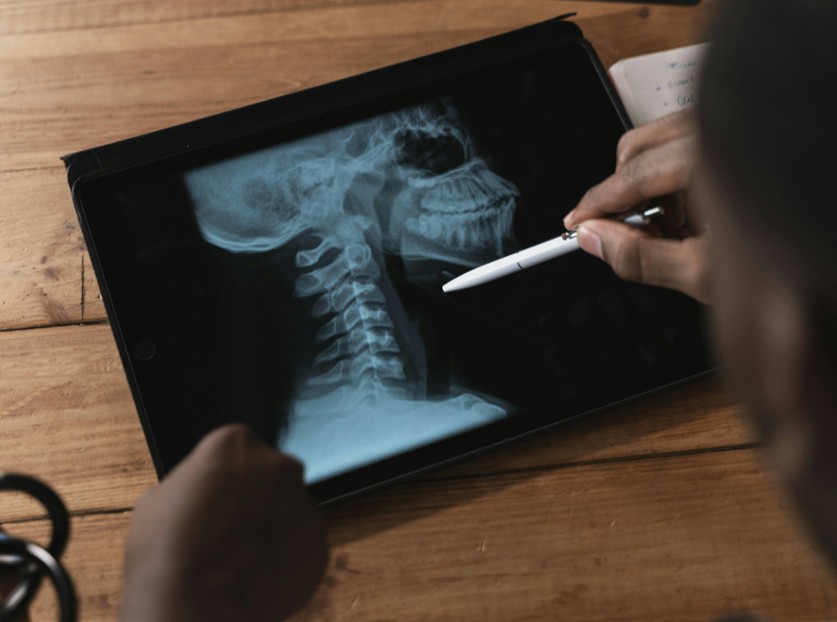Spinal canal stenosis is a condition that can significantly impact an individual’s quality of life, leading to pain, discomfort, and mobility issues. It occurs when the spinal canal narrows, putting pressure on the spinal cord and nerves. Understanding how spinal canal stenosis is diagnosed and managed is crucial for those affected by this condition. Dr. Shashidhar B.K., a renowned spine surgeon in Bangalore at the Bangalore Spine Specialist Clinic, specializes in diagnosing and treating spinal stenosis effectively.
Understanding Spinal Canal Stenosis
Spinal canal stenosis can result from various factors, including age-related changes, injuries, or underlying medical conditions. Common symptoms include:
- Pain: Often felt in the back, legs, or feet.
- Numbness or Tingling: These sensations may radiate from the spine to the extremities.
- Weakness: Difficulty in walking or maintaining balance.
If you experience these symptoms, it is essential to consult a specialist like Dr. Shashidhar B.K. for a comprehensive evaluation.

Diagnosis of Spinal Canal Stenosis
1. Medical and Family History
The diagnostic process begins with a thorough assessment of your medical and family history. Dr. Shashidhar will ask specific questions to understand the nature of your symptoms, including:
- Location of Pain: Where do you feel pain, and does it radiate to other areas?
- Symptom Description: Can you describe the type of pain (e.g., aching, burning, tingling)?
- Onset of Symptoms: When did you first notice these symptoms?
This information helps the doctor determine potential causes and risk factors associated with spinal stenosis.
2. Physical Examination
A physical examination is a critical step in diagnosing spinal canal stenosis. Dr. Shashidhar will evaluate:
- Range of Motion: Assessing the limits of your ability to move.
- Pain Response: Observing if pain occurs during hyper-extension (bending backward) or if it improves when bending forward.
- Neurological Function: Evaluating sensation, muscle strength, reflexes, balance, and gait.
These assessments provide valuable insights into the severity and impact of the condition.
3. Imaging Tests
Imaging tests play a vital role in confirming a diagnosis of spinal canal stenosis. Dr. Shashidhar may recommend the following imaging techniques:
- X-rays: These can reveal bone-related issues such as calcification, degeneration of discs, spondylolisthesis, and tumors.
- MRI (Magnetic Resonance Imaging): This advanced imaging technique uses powerful magnets to create detailed images of the spinal structures, particularly soft tissues like discs, ligaments, and nerve roots. MRI is crucial for diagnosing damage or disease affecting the spine.
- CT Scan (Computed Tomography): CT scans provide 3D images and help assess bony structures, fractures, and changes due to osteoarthritis.
While imaging tests are essential for diagnosis, they alone do not determine the need for treatment.
Management of Spinal Canal Stenosis
Effective management of spinal canal stenosis often involves a combination of nonsurgical and surgical treatments, tailored to the individual’s needs.
A. Nonsurgical Treatments
- Physical Therapy:
- A physical therapist will design a personalized program to maintain spinal motion, strengthen abdominal and back muscles, and improve endurance. Activities such as swimming or cycling may be encouraged.
- Bracing:
- In some cases, a brace may be recommended to provide support and help regain mobility, especially for individuals with weak abdominal muscles.
- Complementary Treatments:
- Techniques such as spinal manipulation and acupuncture may offer relief for some patients, addressing pain and discomfort through alternative methods.
B. Medications
Dr. Shashidhar may prescribe various medications to manage pain and inflammation associated with spinal canal stenosis:
- Anti-inflammatory Medications: These help reduce inflammation and alleviate pain.
- Over-the-Counter Pain Relievers: Common medications can provide relief for mild pain.
- Prescription Pain Relievers: For more severe or acute pain, stronger medications may be necessary.
- Injections: Anti-inflammatory or numbing injections can target nerve compression or irritation.
C. Surgical Treatments
If nonsurgical treatments do not yield sufficient relief, Dr. Shashidhar may recommend surgical options. Surgery is often considered when symptoms persist or worsen, especially if there is numbness, weakness, or impaired bowel or bladder function. Possible surgical procedures include:
- Laminectomy:
- This procedure involves removing bony spurs and portions of the vertebrae to relieve pressure on the spinal cord and nerves. It may also include a discectomy, which removes part of a herniated disc.
- Spinal Fusion:
- This surgery involves joining two or more vertebrae to stabilize the spine, particularly in cases of spondylolisthesis or age-related changes.
- Minimally Invasive Surgery:
- Utilizing smaller incisions, this approach reduces scarring and damage to surrounding tissues, leading to quicker recovery times.
Considerations for Surgery
The decision to undergo surgery depends on various factors, including:
- The effectiveness of nonsurgical treatments.
- The severity of symptoms.
- Overall health and any existing medical conditions.
- The specific anatomy of the spine and its suitability for surgical intervention.
Living with Spinal Canal Stenosis
Living with spinal canal stenosis can be challenging, but there are self-care strategies that can help manage symptoms:
- Regular Exercise: Aim for at least 30 minutes of exercise three times a week. Consult with Dr. Shashidhar or a physical therapist for appropriate exercises.
- Modify Daily Activities: Pace yourself to avoid overexertion and adjust routines to minimize pain triggers.
- Use Assistive Devices: Consider using devices that provide stability when walking.
- Posture Adjustments: Flexing the spine may alleviate some symptoms by relieving pressure on nerves.
- Healthy Lifestyle Choices: Maintain a healthy weight and avoid smoking to support overall spinal health.
Conclusion
Spinal canal stenosis can significantly affect your daily life, but with proper diagnosis and management, individuals can find relief from their symptoms. Dr. Shashidhar B.K. at the Bangalore Spine Specialist Clinic offers expert care for patients suffering from spinal stenosis. By utilizing a comprehensive approach that includes medical history evaluation, physical examinations, advanced imaging, and personalized treatment plans, he helps patients regain mobility and improve their quality of life. If you are experiencing symptoms of spinal canal stenosis, don’t hesitate to seek professional help for a thorough evaluation and effective management strategies.
